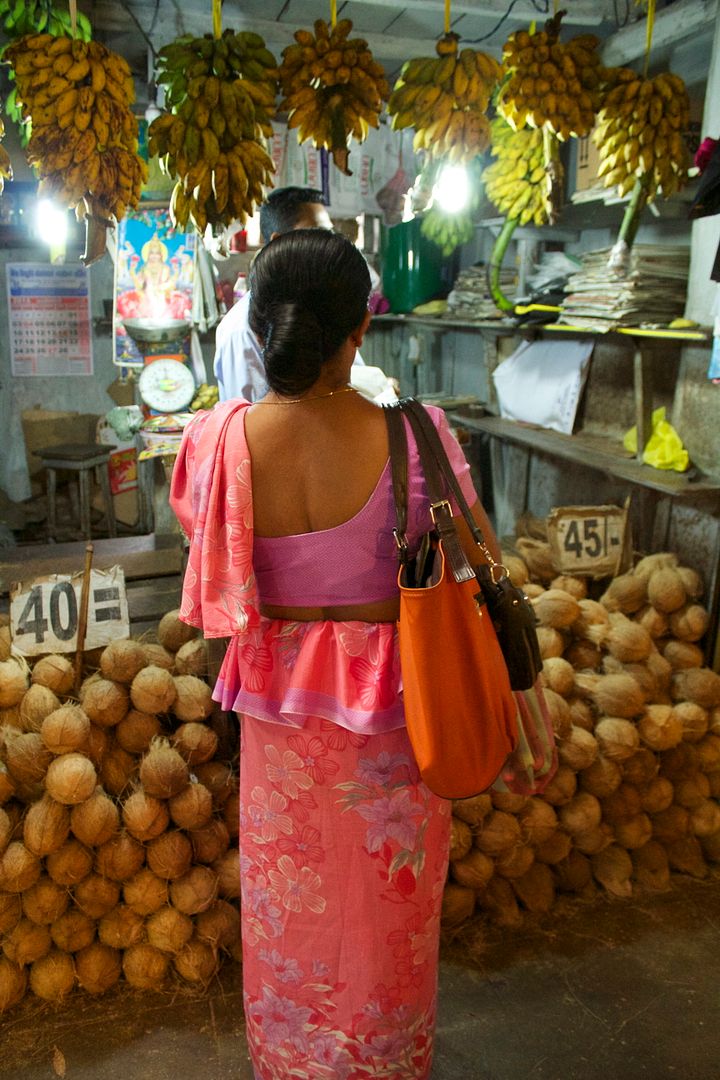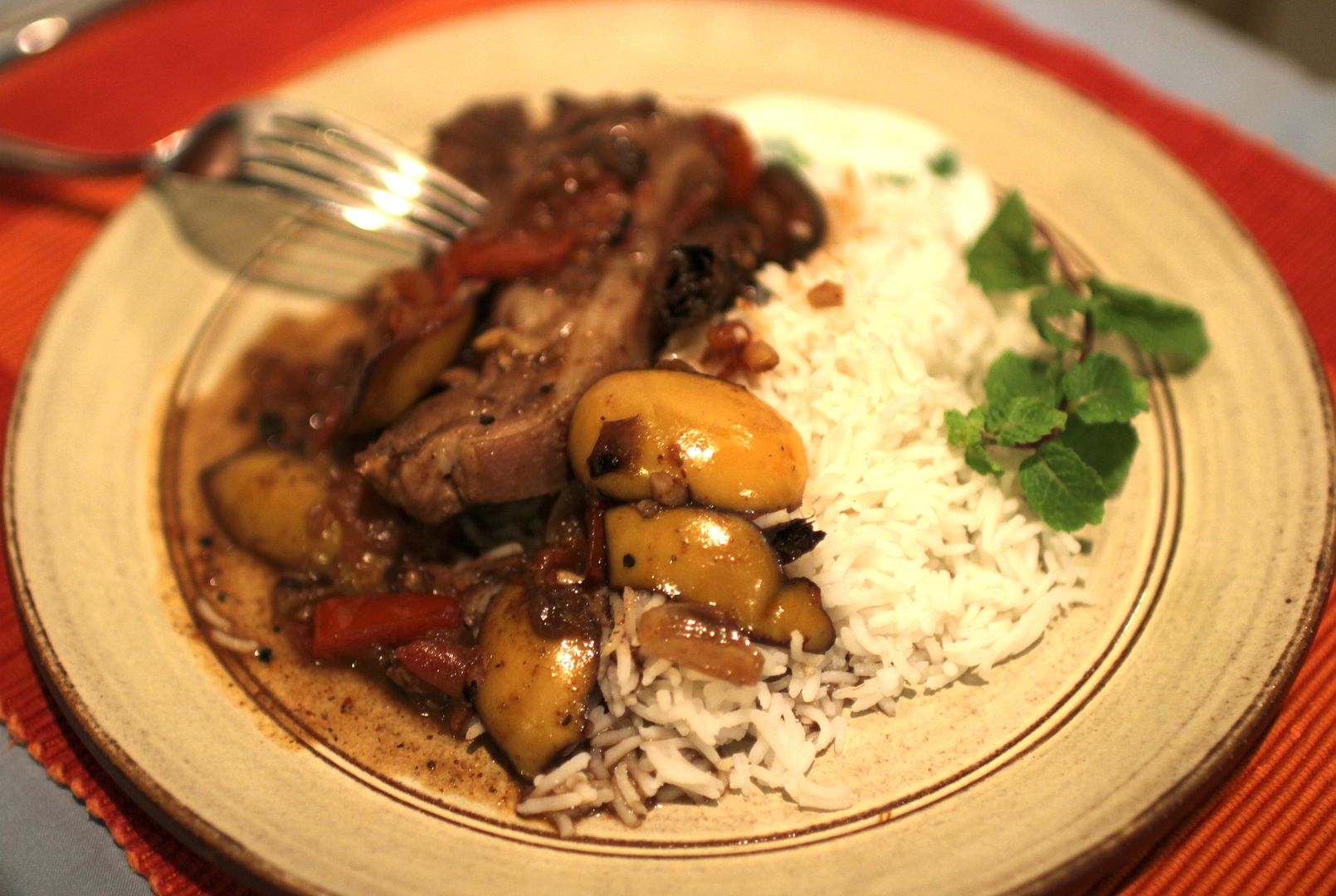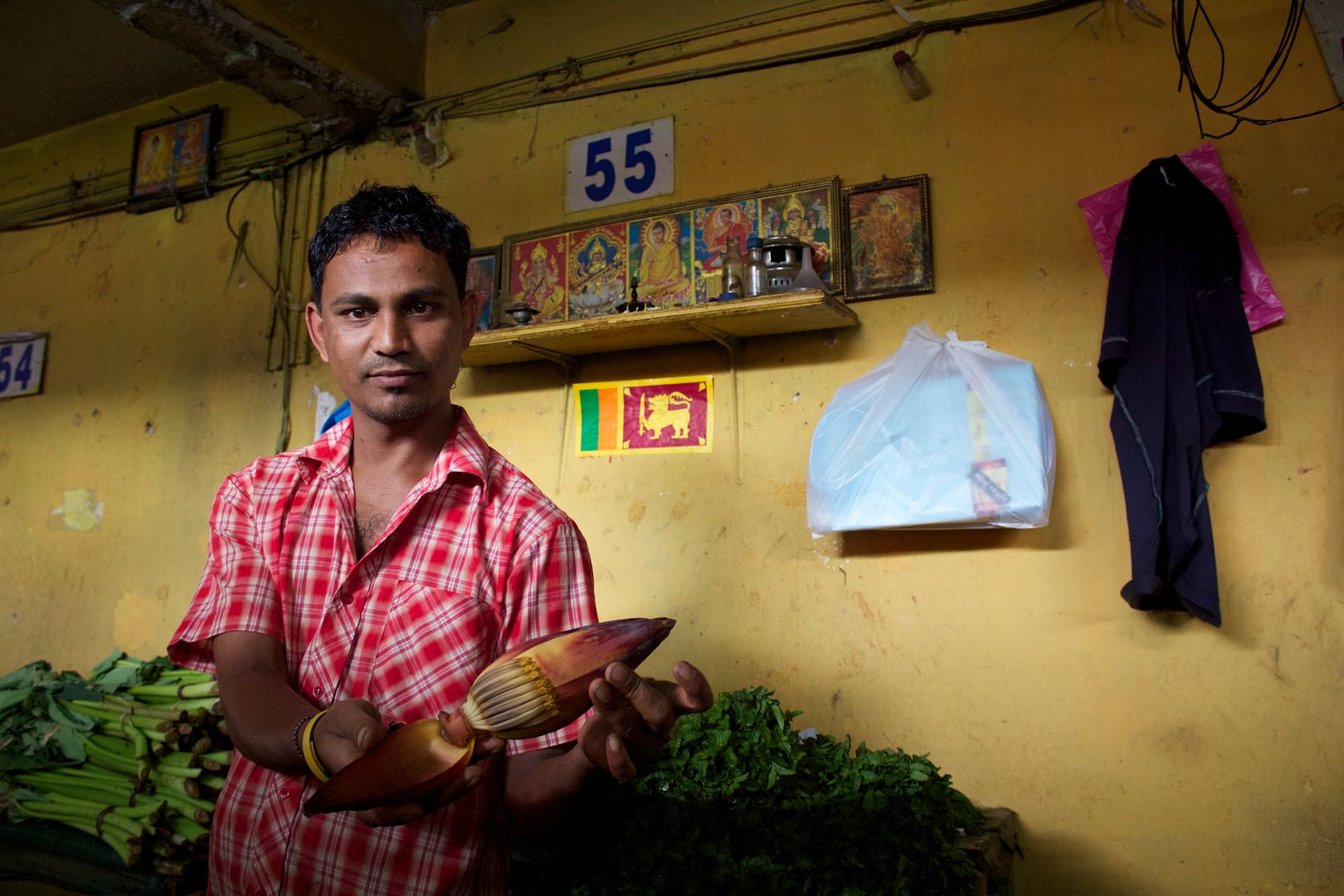While traveling around the tear-drop island of Sri Lanka, I ate an incredible variety of fruit - mangoes and bananas, coconut, durian, mangosteen, watermelon, guava, pineapple. They filled in the hungry gaps, they brought bright spots of color to the landscape and the markets, and most of all they inspired me to hurry home and start cooking.
Fruit and spice have a happy marriage in cuisines around the world. I even learned that the fruit surrounding the precious nutmeg (seen above with its lacy counterpart, mace) is made into jams and chutneys. While visiting a spice farm near Kandy, located in central Sri Lanka, I took a small bite of the nutmeg fruit and found it quite bitter, but distinct with the flavor of nutmeg.
On my return to Bangkok, I discovered it was plum mango season. Plum mangoes (seen in the photo below) aren't a plum at all but rather a tropical fruit called ma-yong in Thailand, related to the mango. While they are sweet, they also have a delightful tang of sourness and a thin, edible skin, which makes them a perfect fruit to cook with.
Craving the taste of curries that I ate every day while traveling around Sri Lanka, I decided to combine the plum mangoes with cinnamon, chili and other spices in a tasty lamb curry.
I've also been reading this book The Flavor Thesaurus by Niki Segnit which constantly has my brain ticking away with flavor pairing ideas. When I competed as a barista many years ago, this was the primary goal of the competitions: pair your espresso with the right ingredients to highlight its inherent flavors, be they fruit, spice, chocolate or even seaweed. Coffee became the lens you asked the judges to look through - and if they liked what they saw (and tasted), you'd win.
Pairing flavors is a similar challenge to that of the barista, although espresso, being dominant in bitter flavors, is notoriously difficult to pair things with. You have to look deep into the coffee's soul to find those other notes - the sweet and tangy ones, the savory and floral ones.
It's not as hard with fruit and spices. Cinnamon, especially Cinnamomum zeylanicum, has a sweetness that makes it a perfect pair with a sour fruit; one of Niki Segnit's suggestions is for broiled grapefruit with cinnamon. But it's also great in a fruit & meat curry, as the sweetness balances the spiciness of the chili, and plays off the sour-sweet notes of the fruit.
I found a recipe for lamb curry with apricots in this great book I bought in Kerala. It's called 50 Great Curries of India by Camellia Panjabi and I suggest you get a copy, pronto. It is a small book packed with recipes that are easy and delicious, and its made Indian food more approachable than ever. And it changes the way you think about curry; no longer will the word bring up images of yellow powder but rather a vast number of colorful, flavor-rich dishes that are thrilling to prepare.
And just so I don't get in trouble - this dish is not a typical Sri Lankan dish. It's a curry popular in Mumbai, India. But Sri Lanka and India, while distinct culinarily, do have a lot in common in terms of the ingredients and spices used throughout the cuisine.
The dominant spice note of the dish is the Ceylon cinnamon (sweet and floral and woodsy) and the fruit can be apricots (dried OR fresh) but I used ma-yong grown in Northern Thailand; anything that will add a tangy sweetness (to offset the strong flavor of lamb) and a soft texture will work.
Jardaloo Boti or Lamb with Apricots
Adapted from Camellia Panjabi's "50 Great Curries of India"
Serves 4
4 oz dried apricots OR 3 fresh apricots/plum mangos or even regular fresh plums, pitted and quartered
3 TB oil
4 medium size shallots, sliced thin
1 cm piece of fresh ginger, chopped
2 plump garlic cloves, chopped
1 (3") stick of ceylon cinnamon
6 green cardamom pods
1 tsp chili (less if you don't want it spicy!)
1/2 tsp cumin powder
2 medium size tomatoes, chopped
1 1/2 lbs stewing lamb or 4 lamb chops
1 tsp garam masala powder
1/4 tsp fresh ground black pepper
salt
1 tsp wine vinegar
1 tsp sugar
Directions:
If you're using dried apricots, soak them in about 1/4 cup hot water with 1/2 teaspoon vinegar for at least an hour.
On med-high, heat the oil in a non-aluminum cooking pot (I used a big cast iron frying pan) and fry the shallots for about 7 minutes or until golden-brown. Pile the cooked onions in the middle of the pan and add the ginger and garlic on top of the pile. Turn the heat down a little, stir gently and cook for 2 minutes, then add the cinnamon stick and cardamom pods. After a further minute, add the cumin and chili powder and stir well.
Add the tomatoes and cook for 5 minutes. Then add the meat, garam masala powder and pepper and stir-fry the spices for about 5 minutes. Add the fresh fruit or dried fruit, a cup of water and a bit of salt (about 1/2 teaspoon), then cook slowly over a very low heat until the meat is tender and the fruit begins to melt. If the liquid evaporates, add a further 1/4 cup of water.
When the meat is done add 1 tsp vinegar and 1 tsp sugar and cook a further ten minutes, mixing well. Season to taste.
Serve with basmati rice and yogurt with chopped mint.









No comments:
Post a Comment